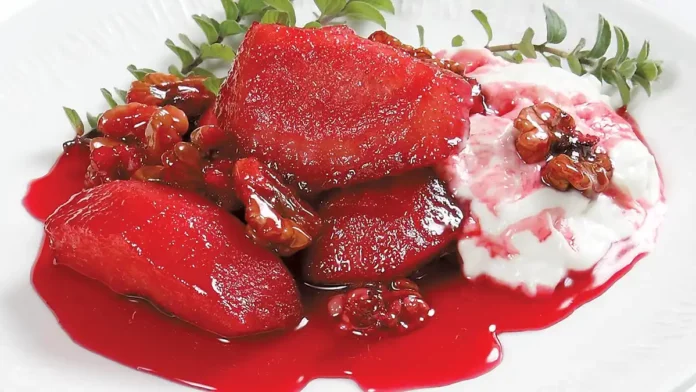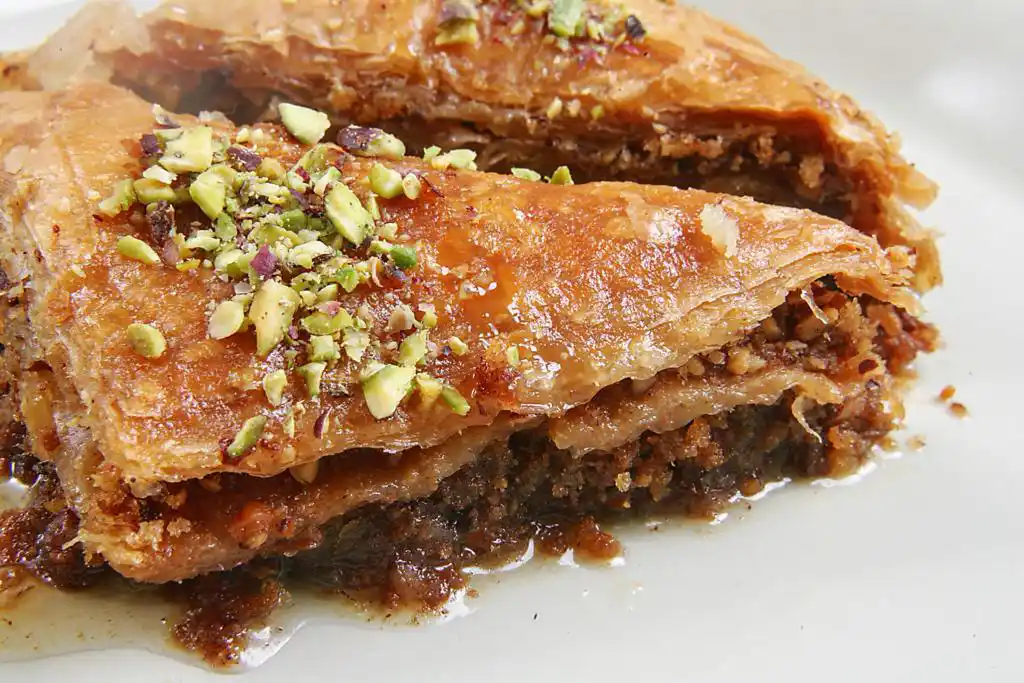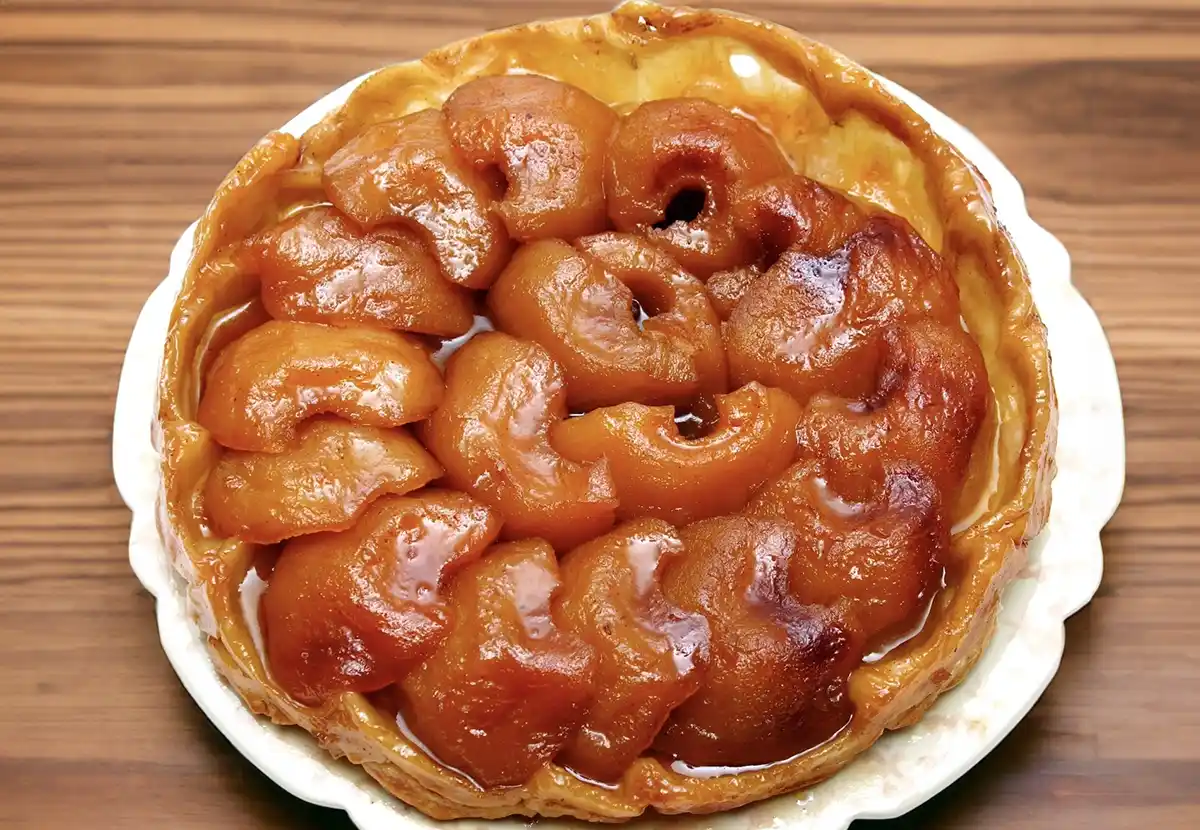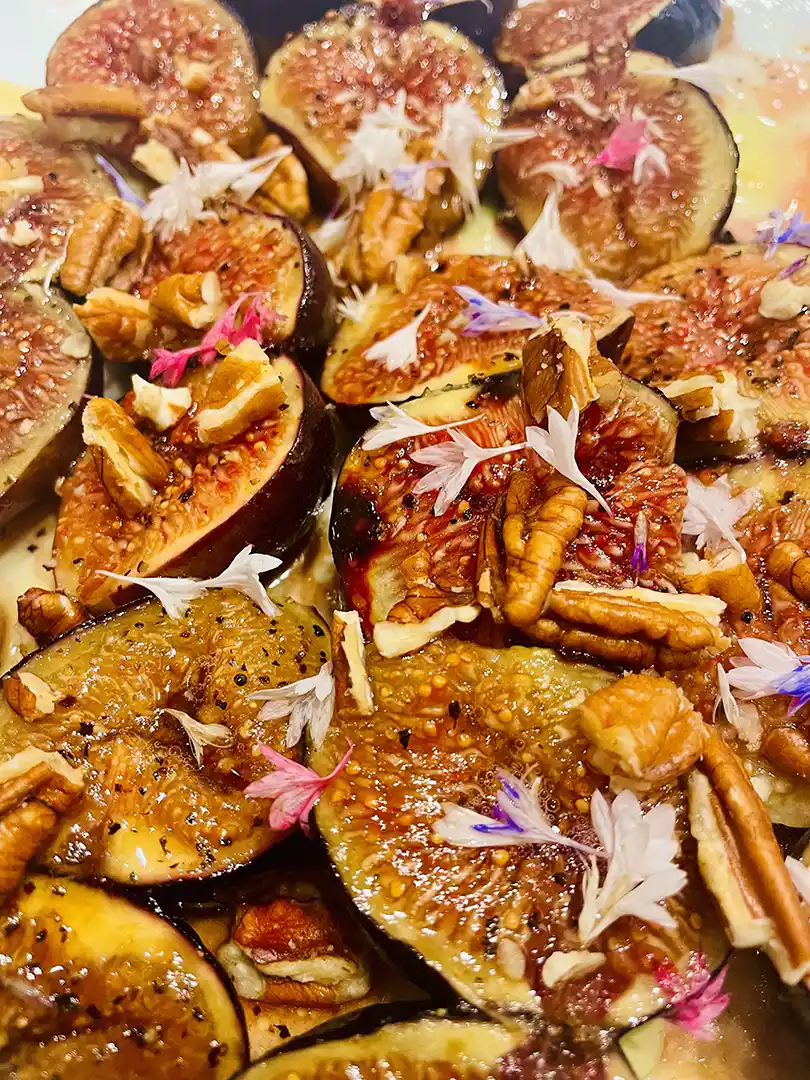
The holiday season is upon us, and the start of 2024 is just around the corner, but before we say goodbye to 2023, we still have parties, dinners, and gatherings to cook for and attend!
For me, while I love all of the festive foods that are essential to the celebratory season, ever since I was young, what gets me excited are the desserts, even though I don’t have a major sweet tooth! Of course, there are the classics – both American and Greek, but what I’ve really come to appreciate are the fruit focused desserts, as they always seem to be the perfect, lighter end to most rich, heavy, holiday meals…
Sweet Treats in Ancient Greece
Though the modern concept of dessert is a part of culture in Greece today, in ancient times, Greeks ate both fresh and dried fruits as the sweet finish to their dining experiences. In particular pomegranates, grapes and/or raisins, figs, apples, dates, plums, pears, quince, and cherries, which were both cultivated and grew wild in Greece.
From both Deipnosophistae by Athenaeus, a biologist and gastronomist of the later 2nd century AD, and Archestratus, a Syracusian poet and philosopher of the 4th century BC (considered to be the father of western gastronomy), we have learned that the ancient Greeks relied on combinations of honey, nuts and seeds, and doughs for their sweet treats.

For example, there’s Gastrin, the forefather of baklava – nuts, seeds, and spices rolled in thin layers of phyllo with honey, or Sesamous (now known as Pasteli) – a ‘candy’ or ancient energy bar made of sesame seeds and honey. There’s also Teghana, a olive oil baked dough rife with honey.
What’s interesting is that with the exception of grape must or some dried raisins, few – if any – fruit and/or fruit byproducts were involved. Much like today, the natural bounty of the Greek landscape provided delicious produce that required little to no preparation to be enjoyed.
Battle Fruit Desserts: Greece vs America
In Greece today, you can find desserts, sweets, and treats of every possible variety – but the quintessential desserts everyone thinks about when thinking of Greek sweets tend to rely more heavily on honey, nuts, creams and custards, and spice-infused simple syrups – again, because Greece works with the bounty of the land, and in addition to honey and nuts, the quality of the eggs and dairy in Greece is superb.
But Greece has so much more than Baklava, Karydopita (a traditional walnut sponge cake soaked in a spiced syrup), Melomakarona (a traditional walnut-honey holiday cookie), Kourabiedes (a traditional almond shortbread holiday cookie), or Galatoboureko (a semolina custard wrapped in phyllo layers, soaked in a simple syrup) to name a few. We make amazing Milopita (apple cake brimming with perfectly soft apples), Portokalopita (a moist and tender orange cake made with yogurt and phyllo for the batter), or Ladopita (a delectable olive oil cake infused with lemon zest for the perfect level of brightness). We also love our Glyka Koutaliou, spoon desserts, mostly made with fruit – any fruit – and even some vegetables and nuts.

When I first came to visit the United States (before I moved here), what struck me was the plethora of fruit-centric desserts available. Beyond the iconic apple pie, there were pies with every fruit imaginable, as well as tarts, cobblers, and crumbles. All of which make the fruit the star, with the dough and/or toppings as essential supporting characters, but with the chosen fruit on the main stage. Seeing this was incredibly inspiring – because there was a world of possibilities for all kinds of new desserts I could create that I had never experienced before – new textures, new flavor combinations, and new structures as well!
Sweet Reflections
Though my Yiayia (grandmother in Greek) was a truly amazing cook, she had a way with dessert that could put some pastry chefs to shame. While she was skilled at making classic Greek desserts, because we always had fresh fruit from our garden and farm, she would get creative in the kitchen, always quoting Papou (grandfather in Greek) saying that having fruit for dessert was better for us.
She used to make a simple phyllo dough, roll it out thin, and bake it off in the oven. While it was baking, she had sliced apples (skin on of course, because Papou told her that’s where all the goodness was) that she gently coated in a little bit of sugar to help extract the excess moisture. After draining and patting them dry, she would gently layer them on top of the phyllo dough and put back in the oven to let them warm through and bake a bit. She would finish this and make it ‘fancy’ by using baked shards of phyllo she kept in the cabinet and crumbling them on top before sprinkling with ground cinnamon and drizzling with honey. This open-faced apple pita was a childhood favorite of mine, and even now, writing this for you puts a giant smile on my face.

Of course, she had other desserts she would make, like sweet red wine poached pears or quince, that she would place atop a crumble of cornmeal, water, and olive oil. She’d pop that in the oven and sprinkle a touch of sugar on top to allow it to brûlée for the perfect ‘crack’ as you cut into the ruby-hued fruit. As a teenager, this became my favorite, because Yiayia would save the wine she poached the fruit in, and I would secretly take sips of it – it was my way of ‘drinking’ as a teenager…little did I know at the time, the alcohol had long since cooked off!
Yiayia’s pies were next level, but what was so special about when she made pie (whether savory or sweet) was that she would always save the best piece for Papou, her beloved husband. However, because I was the youngest and we had such a special relationship, Papou would always give me the best piece of pie – his piece! It was common in our home to have a secret game of ‘pass the pie’ happen at the dinner table – but no matter what piece you wound up with, everyone was a winner when eating Yiayia’s glyka (sweets).
I’ll Never Dessert You
When it comes to dessert, it’s almost always a healthier bet to use fruit as a primary ingredient. Fruits of all kinds are full of natural sugars, so when you cook or bake with them, you don’t need to add nearly as much of an additional sweetener to get the desired effect. Many fruits also have pectin, which helps with texture and stabilization, and of course, fruit also is naturally sweet and acidic, so it provides a wonderfully balanced bite.

Baking, grilling, or roasting fruit is a wonderful way to bring out the natural sugars within, because as they cook, the flesh softens, and the sugars caramelize, yielding a perfect mouthful. Think roasted figs with a drizzle of honey, or a baked apple with a spiced nut crumble, grilled peaches with basil and ricotta, or poached pears with a dollop of Greek yogurt and red-wine reduction. All simple desserts – all gluten free, and most if not all could be dairy free as well (substitute yogurt or ricotta for a meringue or olive oil sorbet).
Crumbles and cobbler style desserts are fantastic as well, because you can infuse them with herbs and spices, and the crumble or dough on top can be made in a lighter, healthier way to avoid the heaviness that creams and butter offer….think oats and olive oil instead of flour and butter…
Just Desserts
This holiday season, it’s easy to get caught up in heavy ganaches, rich chocolates, decadent creams, and boozy truffles – but leave the heft to the savory part of the meal, and lighten up your dessert with a fruit inspired treat. Aesthetically, few things are prettier than a perfectly fanned pear or plum, or a delicate apple rose. Physically, you’ll feel better ending your meal on a lighter note, and it can help end 2023 and start 2024 on the right foot for a brighter tomorrow. Happy Holidays!
Roasted Figs photo by Dara Davenport; all other photos by Chef Loi.























